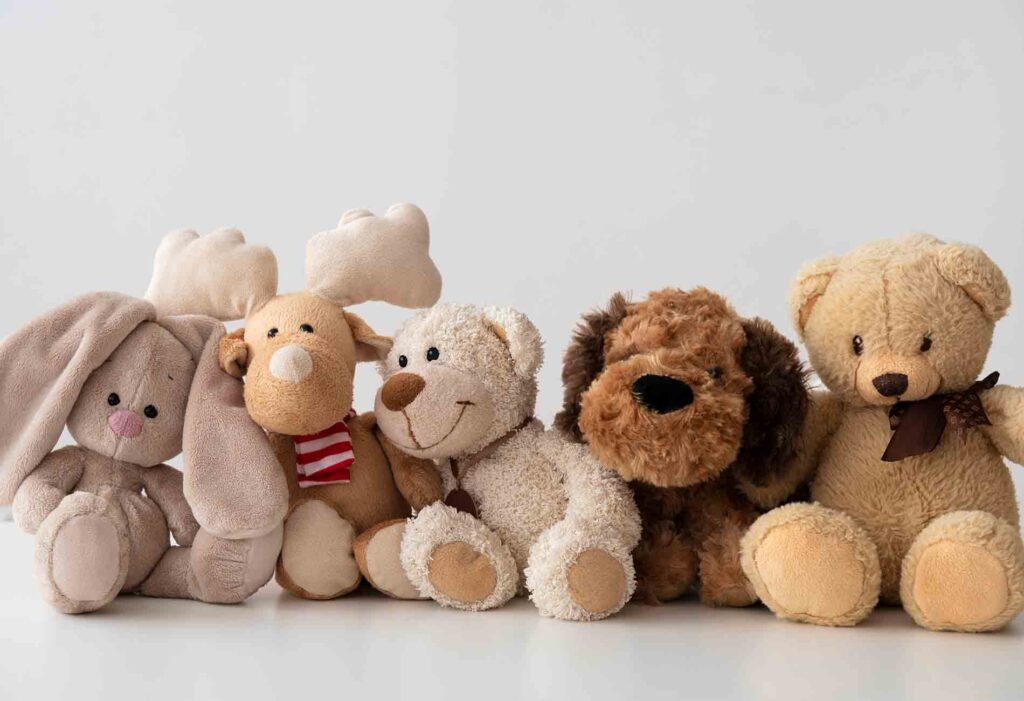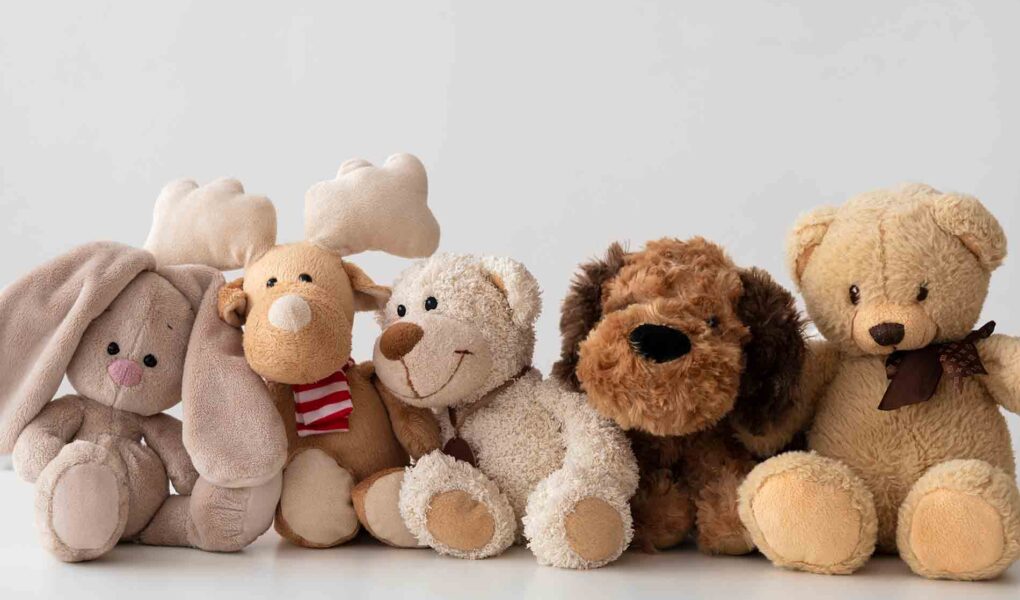In the ever-evolving world of parenting and education, finding effective ways to engage and stimulate young minds is a constant pursuit. One approach that has gained significant popularity is the Montessori toy rotation system. This innovative system encourages children to explore their environment and fosters independent learning and creativity. By strategically rotating toys and materials, parents and educators can create an environment that nurtures a child’s natural curiosity while promoting cognitive, physical, and emotional development. In this article, we will delve into the intricacies of the Montessori toy rotation system, its benefits, and how you can implement it in your child’s life.
If you feel overwhelmed by the amount of toys, your kids does too
Ema Hidlebaugh

Table of Contents:
- The Montessori Toy Rotation System: Unveiling the Basics
- Benefits of the Montessori Toy Rotation System
- Montessori Toy Rotation Categories
- Implementing the Montessori Toy Rotation System: Practical Tips
- Toy Rotation Storage Tips
- Finally, on Toy Rotation System
- Toys That Start with A
- Questions You May Be Asking About Toy Rotation
The Montessori Toy Rotation System: Unveiling the Basics
The Montessori toy rotation system revolves around the concept of presenting a limited selection of toys and materials to children. Instead of overwhelming them with an abundance of choices, the system focuses on a carefully curated collection that caters to their developmental needs. By rotating toys in and out of their play space, children are continually presented with new opportunities for exploration, engagement, and growth.
The Benefits of the Montessori Toy Rotation System
Implementing the Montessori toy rotation system offers an array of benefits for children. Let’s see some of them:
1. Promotes Concentration and Focus
By limiting the number of toys available, the Montessori toy rotation system encourages children to concentrate and engage deeply with the materials at hand. With fewer distractions, they can fully immerse themselves in their play and develop essential focus skills.
2. Fosters Creativity and Imagination
With a curated selection of toys and materials, we encourage children to tap into their creativity and imagination. They learn to think outside the box, finding new and inventive ways to play with the resources. This freedom of exploration stimulates their creative thinking and problem-solving abilities.
3. Develops Independence and Decision-Making Skills
The Montessori toy rotation system empowers children to make choices independently. As they select toys from the options, they learn to evaluate their preferences and decide based on their interests. This process enhances their decision-making skills and nurtures a sense of autonomy.
4. Supports Order and Organization
A key aspect of the Montessori philosophy is the emphasis on order and organization. By rotating toys, children develop an understanding of tidying up and maintaining a structured environment. They learn to take responsibility for their play area and develop a sense of orderliness.
Montessori Toy Rotation Categories
Toy rotation categories are essential for a successful system. They create variety and ensure children experience a diverse range of play. The three common categories are:
1. Developmental Toys Category
Focus on fine motor skills, sensory exploration, and cognitive development. Examples include puzzles, blocks, sensory balls, and shape sorters. Rotate these toys to target different skills and promote well-rounded growth.
2. Imaginative Play Toys Category
Foster creativity, language development, and social skills. Examples include dolls, action figures, play kitchens, costumes, and dollhouses. Rotate these toys to provide new narratives and expand the imagination.
3. Educational Toys Category
Promote learning in math, science, language, and problem-solving. Examples include alphabet puzzles, counting games, science kits, and musical instruments. Rotate these toys to introduce new concepts and keep children engaged in interactive learning.
Remember, toys can fit into multiple categories. Create a balanced rotation for a dynamic and stimulating play environment.
Implementing the Montessori Toy Rotation System: Practical Tips
Now that we understand the benefits of the Montessori toy rotation system, let’s explore some practical tips on how to implement it effectively:
1. Assess and Curate Toy Collection
Begin by evaluating your child’s existing toy collection. Categorize the toys based on their purpose and developmental value. Select a subset of toys from each category to create a balanced and engaging rotation.
2. Create a Toy Rotation Schedule
Establish a rotation schedule that suits your child’s needs and preferences. Some parents choose to rotate toys weekly, while others opt for a bi-weekly or monthly rotation. Find a rhythm that works for your family and stick to it consistently.
3. Designate a Play Area
Display the rotated toys in a designated specific play area in your home. Ideally, this area should be easily accessible and inviting for your child. Consider using low shelves or open bins to showcase the toys, making them easily visible and accessible.
4. Involve Your Child in the Process
Include your child in the toy rotation process. Encourage them to help choose the toys for each rotation, fostering a sense of ownership and involvement. This collaborative approach also allows you to gain insights into their preferences and interests.
5. Observe and Adapt
Observe how your child interacts with the rotated toys. Pay attention to their level of engagement, interests, and developmental progress. Based on their cues, adapt the rotation to introduce new materials that align with their evolving needs.
6. Incorporate Open-Ended and Natural Materials
When selecting toys and materials for rotation, prioritize open-ended and natural materials. These items allow for a variety of play possibilities and stimulate a child’s imagination. Examples include wooden blocks, art supplies, and nature-based resources like shells or rocks.
Montessori Toy Rotation Storage Tips
This is a crucial aspect of implementing a successful toy rotation system. Organizing and storing toys effectively can maximize playtime and keep your child engaged. Here are some practical tips to ensure efficient toy rotation storage:
1. Invest in Toy Storage Solutions
Consider purchasing clear bins, shelves, or toy chests to keep toys organized and easily accessible. Opt for storage containers with lids to protect toys from dust and maintain their condition.
2. Labelling Toy Storage Containers
Label each storage container or shelf with the name or category of toys it holds. This makes it easier to identify and retrieve specific toys during rotations.
3. Separating Toy Sets
Ensure that they store separately each toy set. This helps maintain the element of surprise and excitement when rotating toys. It also allows you easily switch out sets without mixing toys from different rotations.
4. Consider Rotating Toy Storage Locations
To create a sense of novelty, you can rotate the storage locations of the toy sets. For example, if they usually store one rotation set in the playroom, move it to the living room or their bedroom for the next rotation.
5. Regularly Declutter Toys
The children’s toy collection should be assessed periodically to remove toys that children no longer used or have outgrown. This helps keep the toy rotation storage space organized and prevents it from becoming overcrowded.
6. Involving the Child in the Toy Storage Process
Encourage your child to take part in the storage process. Teach them how to sort and organize toys. This promotes independence and helps them understand the toy rotation system better.
By implementing these toy rotation storage tips, you can create an organized and engaging environment for your child’s playtime. Remember, a clutter-free and accessible toy storage system is key to maximizing the benefits of toy rotation.
Finally, on Toy Rotation System
The Montessori toy rotation system provides a valuable framework for parents and educators seeking to create an enriching and engaging environment for children. By carefully selecting and rotating toys, we encourage children to explore, learn, and grow at their own pace. The system promotes concentration, creativity, independence, and organizational skills, setting a strong foundation for lifelong learning. So why not embrace the Montessori toy rotation system and witness the positive impact it can have on your child’s development?
Bonus: Names of Toys That Start with A
- Action Figures
- Art Sets
- Airplanes (toy planes)
- Animal Stuffed Toys
- Alphabet Blocks
- Activity Books
- Arcade Games (miniature versions)
- Adventure Playsets
- Aquatic Toys (such as toy alligators and toy angelfish)
- Animal Figures (realistic animal replicas)
- Army Men (toy soldiers)
- Action Playsets (themed playsets with action features)
- Ambulance Toys (toy ambulances for pretend play)
- Assorted Building Blocks (wooden, magnetic, etc.)
- Astronaut Costumes and Accessories (for role-playing)
- Art Easels
- Archer Sets (toy bows and arrows for play)
- Aviator Goggles (for imaginative flying adventures)
- Animal Finger Puppets
- Activity Cubes (interactive play cubes with various features)
- Alien Action Figures (fun and imaginative extraterrestrial characters)
- Alphabet Puzzles (puzzles with letters for early learning)
- Amphibious Vehicles (toy vehicles that can operate on land and water)
- Animal Print Balloons (for animal-themed parties and decorations)
- Armored Trucks (toy vehicles with protective features)
- Astronomical Telescopes (kid-friendly telescopes for stargazing)
- Artistic Stamps (creative stamps for art projects)
- Arcade Claw Machines (miniature versions for home play)
- Ambulance Playsets (sets with toy ambulance, medical tools, etc.)
- Astronaut Figurines (figurines of space explorers)
This extended list provides even more exciting options for toys that start with “A.” From creative art tools to imaginative playsets, these toys offer endless possibilities for play and learning. Whether you’re looking for toys for toddlers, school-age children, or even collectors, this diverse selection has something for everyone. Have a blast exploring the world of “A” toys!
FAQs About Toy Rotation System
1. How Many Toys Should I Include in Each Rotation?
The number of toys in each rotation depends on your child’s age and their ability to engage with multiple materials. As a general guideline, aim for a selection of 6 to 8 toys for younger children and up to 12 toys for older children.
2. How Often Should I Rotate the Toys?
The frequency of toy rotation can vary based on your child’s interest and attention span. Some parents rotate toys weekly, while others prefer a longer rotation period of two weeks or even a month. Observe your child’s engagement and adapt the rotation schedule accordingly.
3. What Should I Do with the Toys Not in the Current Rotation?
Store the toys not in the current rotation in an organized manner. You can use labelled bins or shelves to keep them easily accessible for future rotations. Consider periodically evaluating and purging toys that your child has outgrown or lost interest in.
4. Can I Incorporate Technology-Based Toys Rotation?
A4: While the Montessori approach leans towards more traditional and hands-on materials, it is not inherently opposed to technology-based toys. However, it is crucial to strike a balance and ensure that technology-based toys do not dominate the rotation. Focus on providing a diverse range of materials that encourage different play.
5. How Can I Encourage My Child to Tidy Up After Play?
Modelling and consistency are key when teaching children to tidy up after play. Establish a routine where tidying up becomes a natural part of the play experience. Use simple and clear instructions, and offer gentle reminders if needed. Gradually, your child will develop a habit of cleaning up after themselves.
6. Can I Implement the Montessori Toy Rotation System in a Classroom Setting?
Absolutely! We can successfully implement the Montessori toy rotation system in a classroom setting. Teachers can adapt the rotation schedule based on the space and the number of students. The benefits of promoting independent learning, focus, and creativity equally apply in a group setting.



